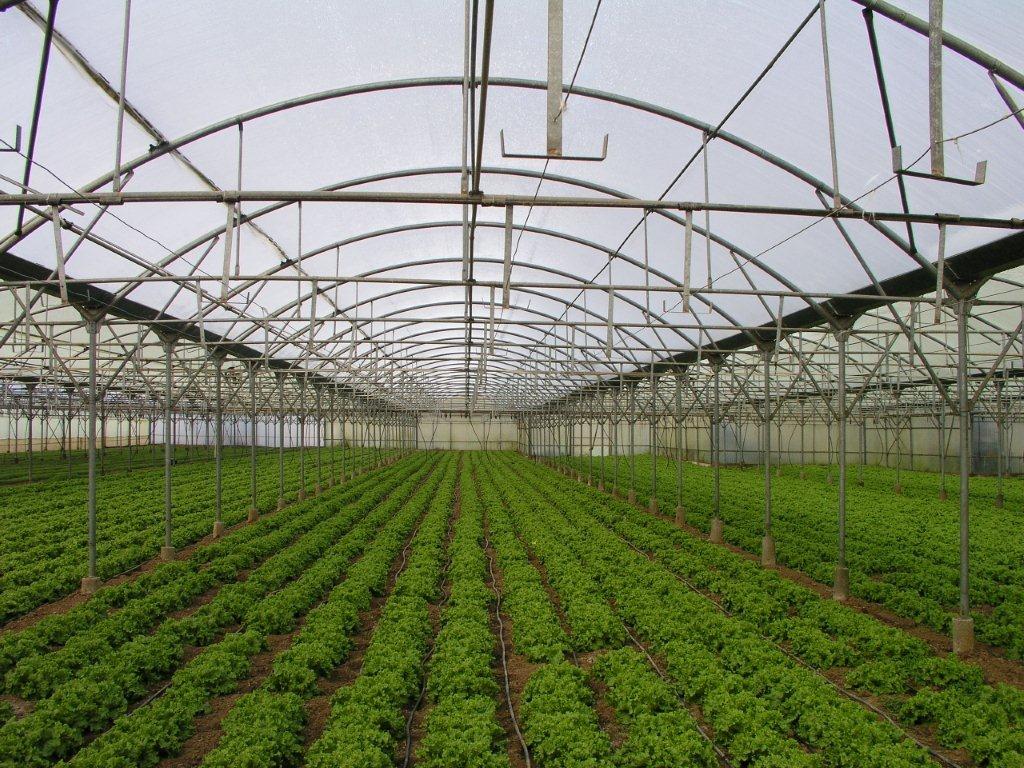
Greenhouse Film Basics
It is universally understood and accepted that to have and maintain a controlled growing environment, the plants must be inside a structure that is enclosed and covered. This article attempts to deal with the covering solution.
Whether the grower uses glass, polycarbonate or film, there are multiple choices available in each group.
I think the most cost-effective structure covering is the long-life greenhouse film products. Your initial monetary outlay is significantly less and you have more flexible options. Also, as the technology development continues, there will always be more options available in film than with other coverings.
Options and Availability
A variety of film products are produced, inventoried and are readily available from multiple U.S., Canada and “off shore” film manufacturers. The grower can purchase these products from regional and national distributors and greenhouse manufacturers (OEMs).
Most long-life films (designed for about four years of life) are produced in various sizes (from 6 feet wide to 64 feet wide) that will fit any greenhouse structure. For most manufacturers, the accepted standard lengths are as 100, 110 and 150 feet, but, with enough lead time, the grower can get lengths from 50 to 500 feet.
Some companies stock master rolls of standard film and have a re-winder that enables them to produce special lengths (in 5-foot increments) with a dramatic reduction in lead time.
Guidelines and Efficiency
It would be my recommendation to cover the houses with two layers of plastic (two sheets or one tube) in long-life film. The house should be covered all year long even if you have a few months with no plant production.
Caution: In the summer months, you must keep the house ventilated even though it might be empty. This will help avoid early thermal degradation to the poly covering. In addition, the grower should protect the film from touching a hot pipe by painting those places with a white latex paint or wrapping with a thick white tape.
It has become a common practice for some growers to use two different films on the same house (for cost savings). Usually, they have a layer of longlife clear film (as the top sheet) and a layer of IR/ AC (as the bottom layer). Every manufacturer has a condensation control feature (AC) and some have better performance than others. The performance and results of that feature is also related to the individual growing practices.
The IR/AC (thermal) film is the best choice for the inside layer because of the features and benefits. This film offers excellent light transmission, saves up to 20 percent of your energy, provides up to 60 percent diffusion, and offers condensation control.
• Light transmission. Most standard clear films have about 90 percent PAR light (photosynthetically active radiation) and the IR (thermal) film have about 87 percent PAR. Note: This transmission is based on one layer of film. Consequently, if you have one layer of clear and one layer of IR, you would realize 87 of 90 percent = 78.3 percent.
• Energy savings. IR (thermal) films were introduced in the United States in 1983 for saving energy when energy was expensive (for that time period). This film can reduce power bills (gas or other) by about 20 percent by trapping radiant heat – similar to what glass does. As an example, if you take your vehicle out on a cold clear day and park it. When you return to your vehicle, the inside is warm. The light comes through the glass and heats up the seats and most everything else inside. Then, the glass slows down the loss of the radiant heat. When your house is covered with an IR film, the film does the same thing, it slows down the loss of radiant heat through the poly. It will not make it hotter in the summer because the house is ventilated.
• Light diffusion. Although the film was introduced for energy savings, the grower noticed that the light diffusion was even more beneficial due to better plant production. There are essentially no shadows in an IR film covered house because of the light diffusion. If there are hanging baskets and plants below on the bench, they both get the same amount of light. In addition, when going from a cloudy day to a clear/sunny day, the IR/AC (thermal) film helps to speed up transpiration.
• Condensation control. Most manufacturers refer to this film feature as AC (anti-condensate). However, you cannot eliminate condensation when you have a hot surface and a cold surface that meet. The best you can do is to try and control the condensation.
Regardless, if the grower is using two different types of poly, always use the one with the most features and benefits as the bottom layer to be “closest to the plants”.
Currently, there are commercial films available that offer a variety of benefits: some offer shade, some have selective light transmission, some offer resistance to sulfur degradation, some will cool the greenhouse, and some even help prevent disease. Please consult your local distributor for information and the availability of those products.
An Update
During the fourth quarter of 2015, Lumite will introduce a product that is a single sheet of film and has two products extruded together (one is the long life clear and the other is the IR/AC). When the sheet is installed and inflated, it will delaminate into the two different products. The grower will have installed a sheet that constitutes both the top layer (clear) and the bottom layer (IR/ AC). This helps save on labor because you have basically installed a tube instead of two sheets. In addition, the AC feature (of this film) utilizes completely different technology, allowing the feature to perform for the entire life of the film.


 Video Library
Video Library 




















